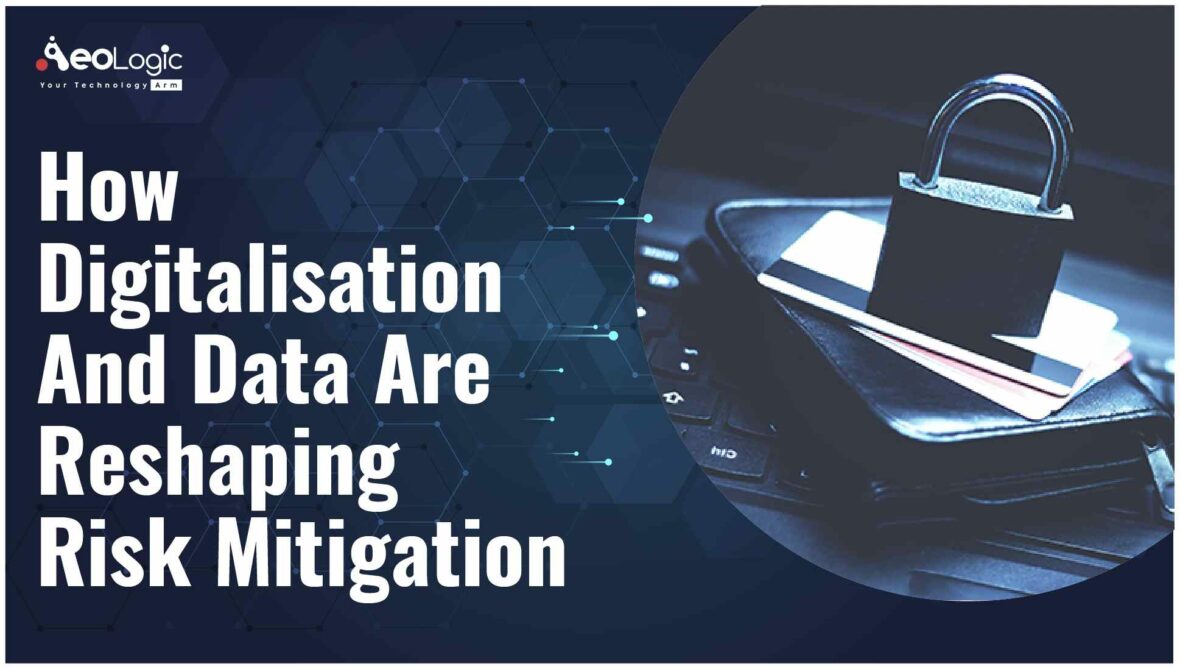The evolution of technology is transforming the way businesses used to function a few decades ago. This transformation has led to the generation of data, and today this data is available in large quantities.
We all are well aware of the fact that the data is highly beneficial for profound decision-making and in defining the success of the organization. But with the generation of data, different types of risks also comes into play.
In this blog, you’ll get to know about risk mitigation and how digitalization and data are reshaping it.
What Is Risk Mitigation?
A response strategy whereby the project team acts to lower the risks in a project. It is an activity used to avoid problems, mitigation means risk avoidance. Risk mitigation or risk avoidance is a part that can be applied before the risk happened and becomes the reality.
Following are the steps for mitigating the risk are as follows:
- Finding out the risk.
- Removing causes that are the reason for risk creation.
- Controlling the corresponding documents from time to time.
- Conducting timely reviews to speed up the work.
By following these steps, we can mitigate the risk easily.
Digitalization And Risk Mitigation
Organizations all over the world look to embrace the latest digital technologies and become increasingly competitive in a global economy. They’re finding themselves in a situation where digital risk is becoming the greatest facet of overall business risk. In fact, if organizations become 100% digital down the line, then every aspect of their business risk will actually be tied down to some form of digital risk.
Being able to manage digital risk is about being able to understand the implications of bringing the latest technologies into the fold and making sure these technologies are brought in, in a safe and sane fashion.
Whether you’re trying to address cyber threats or the risk of third parties or for that matter how you deal with the mobile workforce, in every case, the digital risk is becoming the most crucial aspect of business risk.
Digital Risk Management
Digital risk management is a broad term encompassing every aspect of how you manage digital risk. Within digital risk management, there’s a subset of risks associated with cyber.
Things like threats and managing your security operations center, addressing the possibility of preventing data breaches. All these elements fall into the realm of cyber risks, but there are aspects of risk that are digital but not necessarily associated with the typical cyber activity.
For example: how do you manage the risk of regulatory compliance implications, how do you think about some of your third parties in ways that may not just deal with them getting breached but in the overall implications they could have to your business.
New technologies will come in, and initially, these technologies have to be managed under the umbrella of digital risk. Over time, many aspects of digital risk will transform and get merged into a creative confluence of how you deal with risk in general.
The Importance Of Data In Risk Mitigation
The time we’re living in is very interesting for the analytics industry, in the last few decades the world has witnessed a huge shift from being centralized to decentralized analytics, and then it rapidly turned around and moved back to centralized.
There are three fundamentals behind this is the first one is regulatory, different countries have different legislation. This puts a lot of financial risk for the organization that doesn’t manage customer data well. This is focusing the people’s minds on data and centralization.
The second fundamental is governance, the quality of the data plays a vital role. The organizations make decisions based on data and spreadsheet lowers their financial risk significantly. Data governance and managing the data are very critical because business leaders care about their business, and they care about managing risks.
The third one is security, especially data loss when you look at the organization that has lost huge amounts of data this does not only impact their reputation, impact their business directly, but it also has huge regulatory fines and compliance fines as well.
So, these are the three fundamentals that are making the organization think about what’s the best way to manage my data. What’s the most effective way, and ultimately it’s centralized.
Conclusion
To sum up, digitalization and data analytics is not playing an important role in every industry, but it is also playing a crucial role in conducting businesses by optimizing various aspects of their operations. Mitigating the risk is one such factor that is getting reshaped with the implementation of digitalization and data analytics.
Are you looking to implement digitalization for risk mitigation? If yes, so, please feel free to contact us at support@aeologic.com






